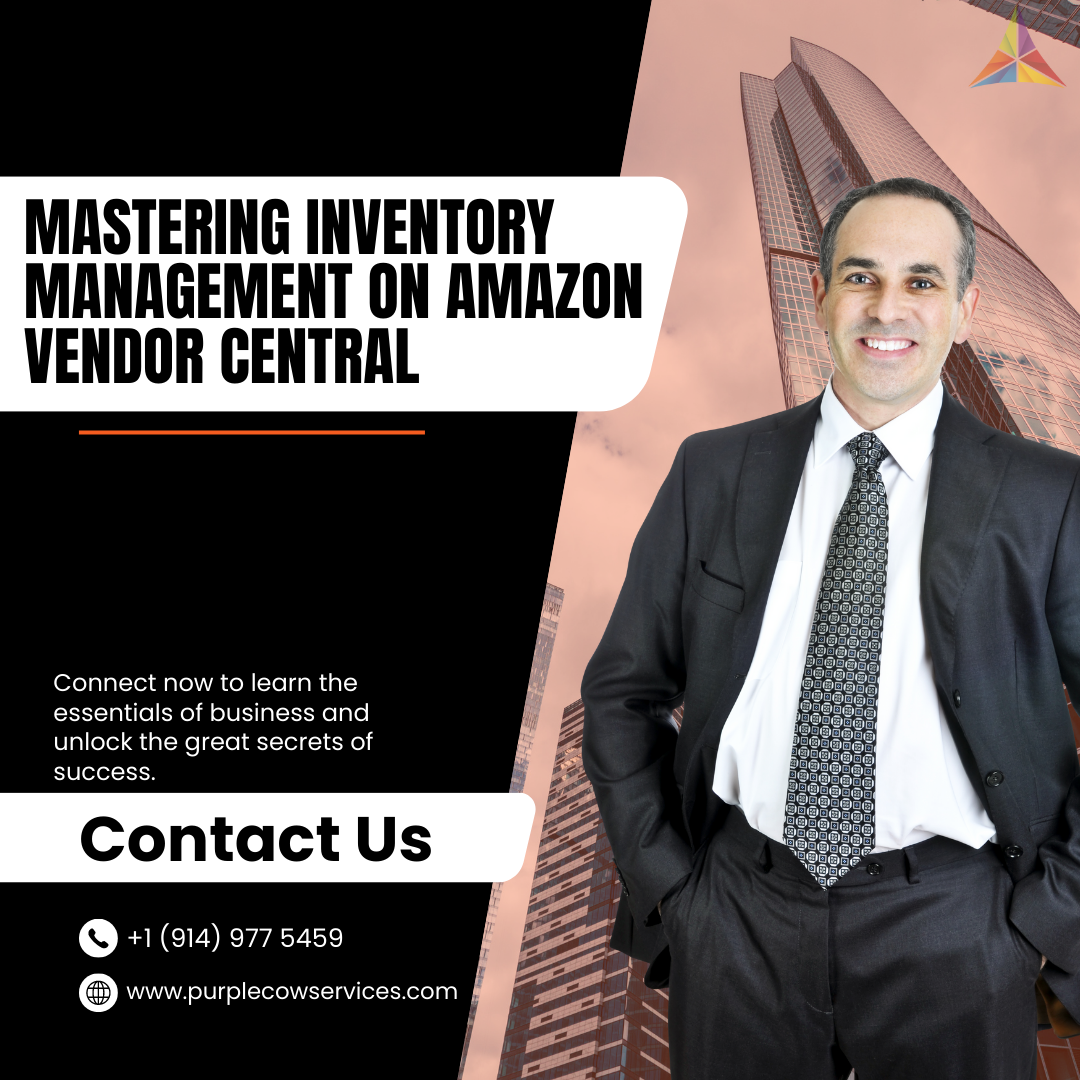When selling products on Amazon Vendor Central, efficient inventory management is crucial for maintaining a healthy business and maximizing profitability. In this comprehensive guide, we will explore the key aspects of inventory management on Amazon Vendor Central, including inventory planning, monitoring, and replenishment strategies.
Share This Story, Choose Your Platform!
By mastering these practices, you can streamline your operations, prevent stockouts, minimize excess inventory, and achieve optimal performance on the platform.
The Importance of Effective Inventory Management
Effective inventory management plays a vital role in the success of your business on Amazon Vendor Central. Here are a few reasons why it is crucial to master this aspect of your operations:
Avoid Stockouts:
Stockouts can result in lost sales, dissatisfied customers, and damage to your brand’s reputation. By managing your inventory effectively, you can minimize the risk of stockouts and ensure that your products are consistently available to customers.
Minimize Excess Inventory:
Excess inventory ties up your capital, increases storage costs, and can lead to potential product obsolescence. By optimizing your inventory levels, you can reduce excess stock and improve cash flow.
Optimize Storage and Fulfillment:
Proper inventory management allows you to optimize your storage space and fulfillment operations. This leads to more efficient order processing, faster delivery times, and improved customer satisfaction.
Maintain Profitability:
By avoiding stockouts, minimizing excess inventory, and optimizing fulfillment processes, you can maximize profitability. Efficient inventory management helps you minimize costs and increase revenue by ensuring a healthy balance between supply and demand.
Key Aspects of Inventory Management on Amazon Vendor Central
To master inventory management on Amazon Vendor Central, it is essential to focus on the following key aspects:
Accurate Inventory Planning:
Effective inventory planning involves analyzing historical sales data, considering seasonal trends, and understanding product demand fluctuations. By accurately forecasting future demand, you can plan your inventory levels accordingly, ensuring that you have sufficient stock to meet customer orders.
Real-time Inventory Monitoring:
Regularly monitoring your inventory levels is crucial for maintaining optimal stock levels. Utilize the inventory management tools provided by Amazon Vendor Central to track your inventory in real-time. This will help you identify low-stock situations, plan replenishments, and avoid stockouts.
Efficient Replenishment Strategies:
Developing efficient replenishment strategies is vital to ensure a continuous supply of your products. Amazon provides various replenishment options, such as Purchase Orders (POs) and Just In Time (JIT) ordering. Analyze lead times, production cycles, and sales velocity to determine the most suitable replenishment strategy for your products.
Safety Stock Management:
Safety stock acts as a buffer against unexpected increases in demand or delays in supply. Set appropriate safety stock levels based on factors like lead times, demand variability, and seasonality. Maintaining an adequate safety stock can help you mitigate the risk of stockouts and maintain a reliable supply chain.
Inventory Performance Metrics:
Monitoring key inventory performance metrics is crucial for evaluating your inventory management strategies. Metrics such as sell-through rate, days of supply, and inventory turnover provide valuable insights into your inventory’s health and help you identify areas for improvement.
Vendor Managed Inventory (VMI):
Consider implementing a Vendor Managed Inventory (VMI) system in collaboration with Amazon. With VMI, Amazon takes responsibility for managing your inventory levels based on sales data and forecasted demand. This approach can help streamline your operations and reduce the administrative burden of inventory management.
Best Practices for Mastering Inventory Management on Amazon Vendor Central
To excel in inventory management on Amazon Vendor Central, follow these best practices:
Conduct Regular Inventory Audits:
Perform regular physical inventory audits to reconcile any discrepancies between your physical inventory and the records in Amazon Vendor Central. This helps ensure accurate inventory data and prevents issues such as overselling or stockouts.
Implement Inventory Forecasting:
Utilize advanced inventory forecasting techniques to anticipate future demand for your products. By analyzing historical sales data, market trends, and upcoming promotions, you can make informed decisions about inventory replenishment and avoid excess stock or stockouts.
Set Reorder Points and Lead Times:
Establish reorder points and lead times for each of your products. Reorder points indicate the inventory level at which you should initiate a replenishment order, while lead times account for the time it takes for new stock to arrive. Setting these parameters ensures a timely and efficient supply chain.
Utilize Automatic Replenishment Programs:
Leverage Amazon’s automatic replenishment programs, such as Vendor Central’s Automated Inventory Management (AIM) or Supply Chain Connect (SCC). These programs use sophisticated algorithms to manage your inventory levels based on real-time data, optimizing the replenishment process and minimizing manual effort.
Implement SKU Rationalization:
Regularly evaluate your product catalog and identify SKUs that are underperforming or have low demand. By streamlining your product offerings and focusing on high-demand items, you can reduce inventory complexity, improve turnover, and increase profitability.
Optimize Warehouse Storage:
Efficient warehouse storage is crucial for effective inventory management. Utilize space optimization techniques, such as ABC analysis, to categorize and prioritize your products based on their demand and frequency of sales. This ensures that fast-moving items are easily accessible and minimizes the time spent searching for products.
Implement Just-in-Time (JIT) Inventory:
Consider adopting a Just-in-Time (JIT) inventory strategy, where you receive inventory from suppliers as close to the customer order as possible. JIT helps reduce holding costs, minimize inventory storage, and increase cash flow. However, it requires close collaboration with suppliers to ensure timely deliveries.
Integrate Inventory Management Software:
Invest in inventory management software that integrates with Amazon Vendor Central. These tools offer advanced features such as real-time inventory tracking, demand forecasting, order management, and reporting. Integration streamlines your operations and provides valuable insights for informed decision-making.
Continuously Monitor and Optimize:
Inventory management is an ongoing process. Regularly monitor your inventory performance metrics and key performance indicators (KPIs). Analyze data, identify trends, and make data-driven adjustments to your inventory management strategies to optimize performance and achieve better results.
By following these best practices and mastering inventory management on Amazon Vendor Central, you can gain a competitive edge, improve operational efficiency, and maximize your sales and profitability on the platform.
Conclusion
Effective inventory management on Amazon Vendor Central is crucial for success. By accurately planning your inventory, monitoring stock levels, implementing efficient replenishment strategies, and utilizing best practices, you can prevent stockouts, minimize excess inventory, optimize fulfillment, and achieve optimal performance. Embrace the power of inventory management to streamline your operations and drive profitability on Amazon Vendor Central.
Unlock the Power of Efficient Inventory Management on Amazon Vendor Central with Purple Cow! Maximize your sales and profitability by mastering inventory planning, monitoring, and replenishment strategies. Prevent stockouts, minimize excess inventory, and optimize fulfillment to stay ahead of the competition. With Purple Cow’s expertise, streamline your operations and achieve optimal performance on Amazon Vendor Central. Take control of your inventory management and unlock your business’s full potential.
Share This Story, Choose Your Platform!
In This Blog:

















